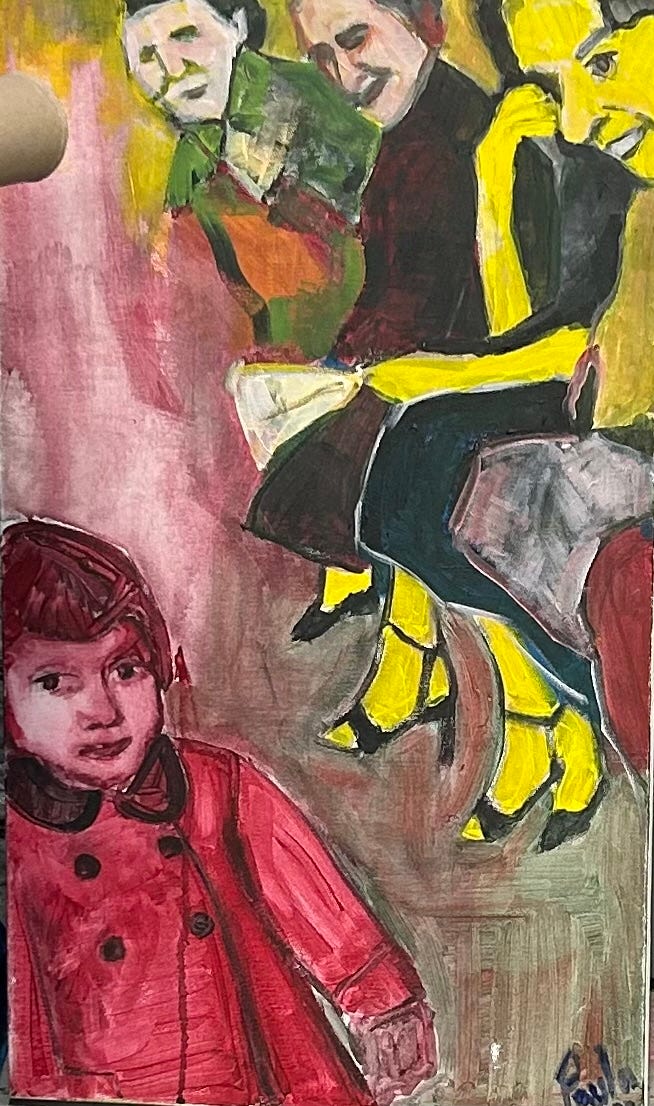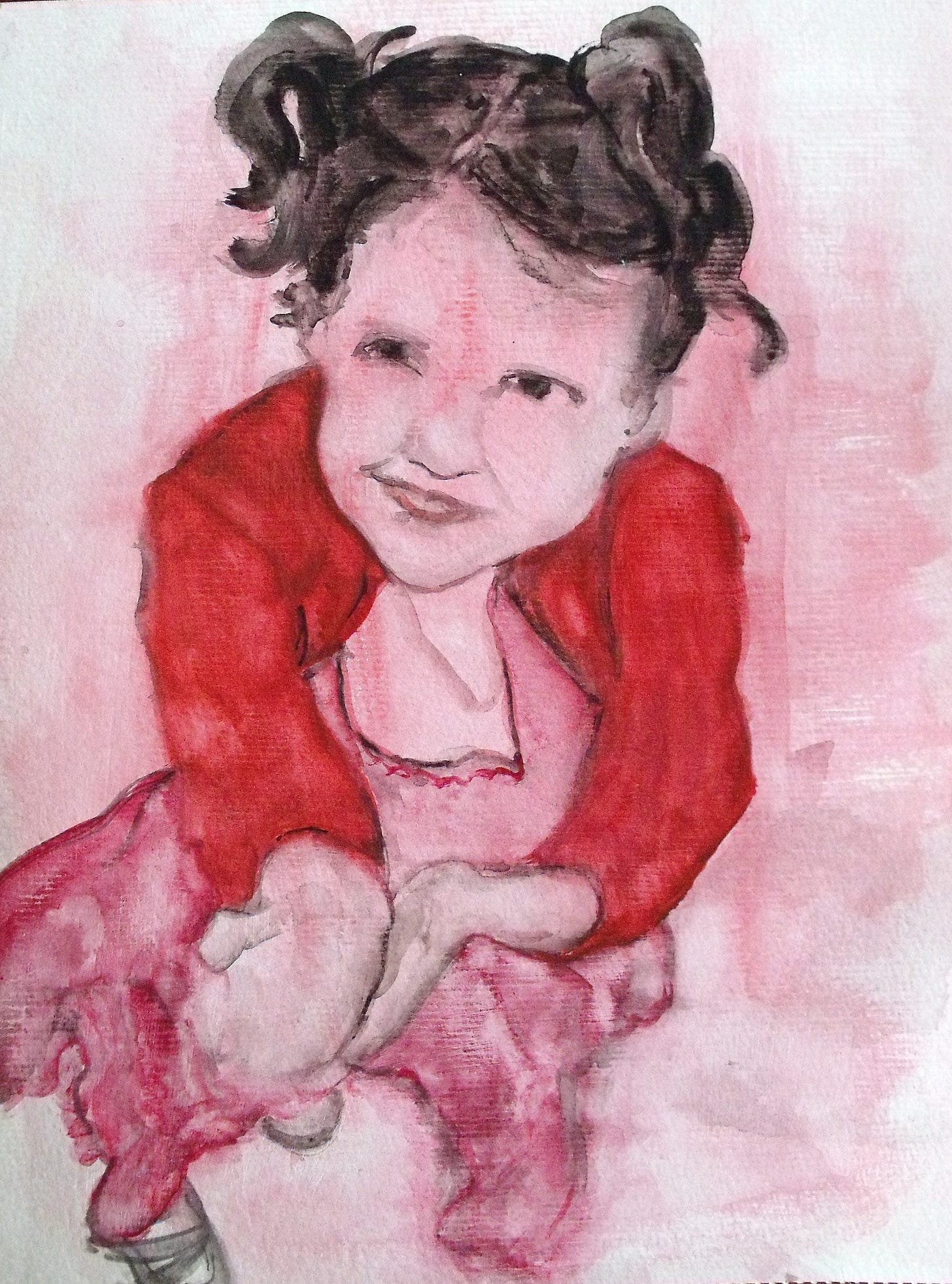If you are a regular or if you have landed on Tarantula: Authors and Art welcome. Paula Elion, an Argentine-Israeli artist, is our September inspiration. Her use of fairy tales, particularly Little Red Riding Hood, motivated our writer Lidia Oshlyansky to investigate what lies behind the image of women in red; what perplexing messages are being delivered to the world's feminine population.
If a friend forwarded you this article, welcome; if you like it, share it or why not subscribe?
Paula Elion’s work and her interview for the magazine sent me on a long internet search about fairytales, norms and the portrayal of women’s roles. It all made me reflect on the continuing rigidity of expectations placed on women.
Much of what we think of as “women’s roles” are codified by countries that are WEIRD. This acronym stands for Western, Educated, Industrial, Rich, Democratic (a good summary can be found in this Slate article ). These expectations are set within the cultural and economic realities we inhabit in privileged societies. They are our realities because of hundreds if not thousands of years of established ‘’ways things should be” standards that are often reflected and moralised in fairy tales. Little Red Riding Hood is certainly one of those.
There are hundreds of academic papers and even books delving into the symbolism of this particular fairy tale. The red hood, for example, is a symbol of lust and sex and yet the covering of the girl’s hair is a symbol of her ‘unavailability.’ A seemingly contradictory symbol, and one where the woman must be two things at once - both modest yet sexy, demure yet flirty, innocent yet knowing. The girl is a both temptress and a naive waif, someone who can’t defend herself from the evil wolf. In other versions of the story, there is no hunter to save the day; instead either the grandma and girl were eaten and therefore dead (the French tale published by Charles Perrault) or the little girl herself defeats the wolf using her wits (another French version). I had always wondered why the young girl is portrayed as so naive that she doesn’t notice the evil wolf; it’s good to know that there was some version where she defeats the wolf on her own.
Paula’s work speaks so strongly about female roles and the Red Riding Hood fairy tale speaks to three of them: the helpful, dutiful daughter, the vigilant, caring mother, the elderly, helpless grandmother. Paula speaks of the time when she was told that “every mother needs a daughter” and here is a fairy tale where the mother sends her dutiful daughter potentially to the daughter’s death - how horrible. However,, fairy tales were meant to scare and to tell morals, not just entertain. They also are and were a way to disseminate expectations. Women are caring mothers, dutiful daughters, helpless elderly ladies.
Many of us are sick and tired of these predetermined roles and the cliches we seem to need to adhere to lest we appear ‘intimidating’ or ‘too emotional’ or ‘angry.’ Paula references the opening scene in the Barbie movie where the little girls break their baby dolls. The scene opens with young girls shown on a rocky beach playing the role of mommy with their baby dolls on a rocky beach until a life- sized Barbie appears can be seen in the classic black and white striped swimsuit and all the little girls throw off their aprons, break their play tea sets, and smash their baby dolls. For me, another scene also spoke to the challenges we face as women. It is the scene where America Ferrera's character talks about the impossible nature of being “good enough” as a woman. “You have to be thin, but not too thin…”; all these things that we must be, all these roles that we must play. We can’t suspect the wolf of being mean but we should watch out for him anyway. We should always stay on the path and do as our mother said, but we should also explore and be brave. We should trust our elders even when we see the teeth and the claws aren’t theirs…
Paula’s work speaks beautifully to the roles we play and asks us to look deeper. To think about these roles as ours to define. It invites us to question these roles, claim them, and do what we believe is right for us and our children. Society and its expectations will just bloody well have to catch up!
Inspired by Little Red Riding Hood
Little Red Riding Hood and other fairy tales and stories from our childhood may be dismissed as mere myths in our imaginations, but could they have left a lasting impression? Are you afraid of the dark or distrust people who appear suspicious before you ever meet them? Here are some connections to artworks, books, and movies that have incorporated the theme of "the girl in the little red dress."
ART WORKS
Visualizing Little Red Riding Hood
FILMS
BOOKS
How To Be Eaten By Maria Adelmann
Women Who Run With The Wolves: Contacting The Power of the Wild Woman by Clarissa Pinkola Estes is the much needed antidote!









